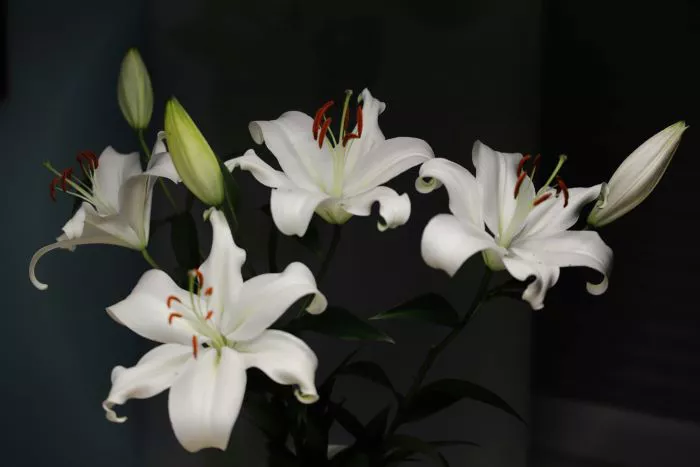Lilies are among the most beautiful and popular flowering plants. Known for their large, fragrant blooms and variety of colors, they can add elegance to any garden or landscape. However, once the flowering period is over, many gardeners are unsure how to care for their lilies. Proper post-flowering care is essential for the health of the plant and for ensuring a vibrant display in the following season. This article will provide a professional guide on what to do when lilies have finished flowering.
Understanding the Lifespan of Lily Blooms
Lilies typically bloom in late spring to early summer, depending on the variety and climate. The flowers can last for several weeks, providing a stunning display. Once the blooms fade, it is important to understand that this is a natural part of the plant’s life cycle. Lilies will begin to enter a period of dormancy after flowering. How you care for them during this time will significantly impact their growth and flowering in the following year.
Deadheading Lilies
One of the first steps to take after your lilies have finished flowering is deadheading. Deadheading is the process of removing spent flowers. This practice has several benefits.
Encourages New Growth: By removing the faded blooms, you prevent the plant from directing energy towards seed production. Instead, the plant can focus on developing healthy foliage and bulbs.
Improves Appearance: Deadheading helps maintain the aesthetic appeal of your garden. Removing wilted flowers can keep your plants looking tidy and vibrant.
To deadhead lilies, simply pinch or cut the flower stem just above the first set of healthy leaves. Be careful not to damage the leaves, as they are essential for photosynthesis.
Caring for Foliage
After flowering, the foliage of the lily plant becomes increasingly important. The leaves play a crucial role in photosynthesis, allowing the plant to gather energy for the next growing season.
Leave the Foliage Intact: Do not remove the leaves immediately after flowering. Allow them to remain until they naturally yellow and die back in the fall. This process can take several weeks to months depending on the climate.
Watering: Continue to water your lilies regularly, especially during dry spells. Adequate moisture is essential for the leaves to photosynthesize effectively. However, avoid waterlogging the soil, as this can lead to bulb rot.
Fertilizing: After the blooms have faded, consider applying a balanced fertilizer. A slow-release fertilizer can provide the necessary nutrients to support foliage growth and bulb development. Follow the manufacturer’s instructions for application rates.
Preparing for Dormancy
As summer progresses and temperatures rise, lilies will begin to enter dormancy. This is a natural phase where the plant conserves energy and resources. Preparing your lilies for dormancy is important for their long-term health.
Reduce Watering: As the foliage begins to yellow, gradually reduce the frequency of watering. This will help the bulbs prepare for dormancy. However, do not let the soil completely dry out.
Mulching: Consider adding a layer of mulch around the base of the plants. Mulch helps retain soil moisture and regulates temperature. It can also protect the bulbs from extreme weather conditions.
Monitor Pests and Diseases: Keep an eye out for any signs of pests or diseases during this period. Aphids, spider mites, and fungal infections can affect the health of your lilies. If you notice any issues, treat them promptly with appropriate measures.
Dividing Lilies
After a few years, lilies may become overcrowded, which can lead to reduced flowering. Dividing lilies is an excellent way to rejuvenate the plants and promote healthy growth.
When to Divide: The best time to divide lilies is in the fall, after the foliage has died back. This allows the bulbs to settle in their new location before winter.
How to Divide: Carefully dig up the bulbs, taking care not to damage them. Separate the bulbs by gently pulling them apart. Each bulb should have some roots attached. Replant the divided bulbs immediately in well-draining soil at the same depth they were previously growing.
Spacing: When replanting, ensure that there is adequate space between the bulbs. This will allow for proper air circulation and growth.
Storing Bulbs for Winter
In colder climates, it may be necessary to prepare lily bulbs for winter storage. Some varieties are not hardy enough to survive freezing temperatures.
Digging Up Bulbs: After the foliage has died back, carefully dig up the bulbs. Shake off excess soil but avoid washing them, as moisture can lead to rot.
Curing: Allow the bulbs to cure in a cool, dry place for a few days. This helps to toughen the outer skin and prevents rot during storage.
Storing: Store the bulbs in a paper bag or a cardboard box in a cool, dark place. Avoid plastic bags, as they can trap moisture and promote rot. Check the bulbs periodically for any signs of decay.
Conclusion
Caring for lilies after they have finished flowering is crucial for their health and future blooms. By deadheading, nurturing the foliage, preparing for dormancy, and dividing or storing bulbs as needed, you can ensure that your lilies remain vibrant and healthy. With proper care, your lilies will reward you with beautiful blooms year after year, enhancing the beauty of your garden and landscape.


